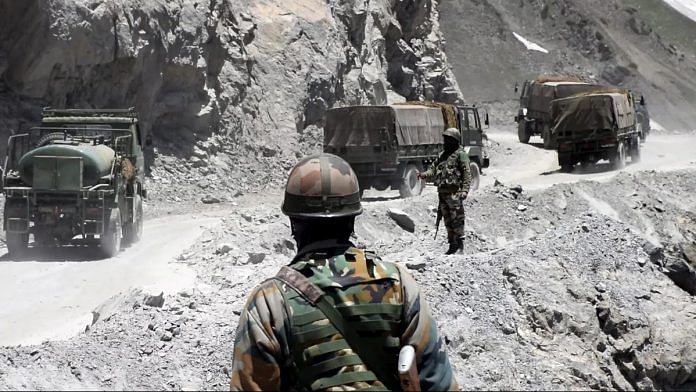New Delhi: Amid the India-China stand-off, the defence and security establishment here is considering a more prominent role for the Indo-Tibetan Border Police (ITBP) in LAC management with the Army then being in charge of border defence.
According to sources, this idea is being discussed at various levels in the establishment. If cleared it would mean that the Army will be away from the grey zone areas of the LAC, especially since both sides are creating buffer zones in Ladakh near the LAC.
The grey zones refer to areas where the forces from both India and China patrol and come face to face. Currently, the Army and ITBP jointly patrol the grey zones.
Under discussion also is the possibility that on the Chinese side, it would be the Border Defence Regiment (BDR) manning these grey areas, and not the Peoples Liberation Army (PLA). This, if approved, will be taken to the Chinese for further discussion to ensure peace and tranquility along the LAC.
“China is indulging in salami-slicing. It takes four steps forward and two behind to give an illusion of being accommodating. There is a need to clearly demarcate the LAC and the grey zones,” said a source familiar with the matter.
“The grey zone should ideally be handled by the border forces of the two countries. The agreements on patrol protocols should be followed there,” said the source.
If the idea finds acceptance, the Army would be deeper in areas that the country clearly controls, said the sources.
“The protocols won’t be applicable in this area. If anyone tries to come in there, they would be treated as per the Standard Operating Procedures of border defence,” the source quoted above said.
The idea has gathered some steam, especially after the 15-16 June Galwan clash where the Army lost 20 soldiers.
“The Army can be given a straight order to capture the grey zones and they will fight for it with their life. But then if it’s decided that such zones will exist till both sides work out border issues, then the ITBP should be given the role of border management,” said a second source.
Also read: Ajit Doval talks to Chinese foreign minister, both agree on ‘earliest complete disengagement’
Tense situation
Following the initiation of disengagement process in Ladakh, China has moved back by about 1.5-2 km in various locations, while the pullback by India will be a “little less” since Indians were anyway in their own territory.
However, both sides have agreed to what is being described as a “buffer zone”, which would be an area where neither side carries out any construction or patrolling activity and would differ from location to location.
It will take time before India resumes its normal patrols up to patrol point (PP) 14 in Galwan Valley, and PP 15, 17 and 17A in the Hot Spring area.
All these posts fall in what has been described as a “grey area”, which both sides claim but have no permanent posts or structures in. Such grey zones are almost all along the LAC.
No specific time has been agreed upon regarding how long the buffer zone will exist, the sources added, saying it is a confidence-building measure for restoration of status quo as of early April.
‘Army men are taught to defend and attack’
A third source said the two sides will eventually “have to settle the border or have at least some kind of understanding about the LAC”.
“Army men are taught to defend and attack. A soldier who gets posted to LAC suddenly finds himself doing the opposite of what he has been taught — no use of firearms, banner drills among others,” the source said.
In September last year, Chief of Defence Staff General Bipin Rawat, who was then the Army chief, had said that officers forget that things being done at the Line of Control was for a different purpose and the deployment at LAC has a different purpose.
Rawat had then argued for creating reserves and using technology to monitor the LAC.
He had also stressed the need to increase capability against China saying that unlike Pakistan, a possible future war with China will be long-drawn, instead of a sustained, intense operation.
Also read: Army postpones mandatory annual, periodic medical tests of soldiers as Covid cases rise



